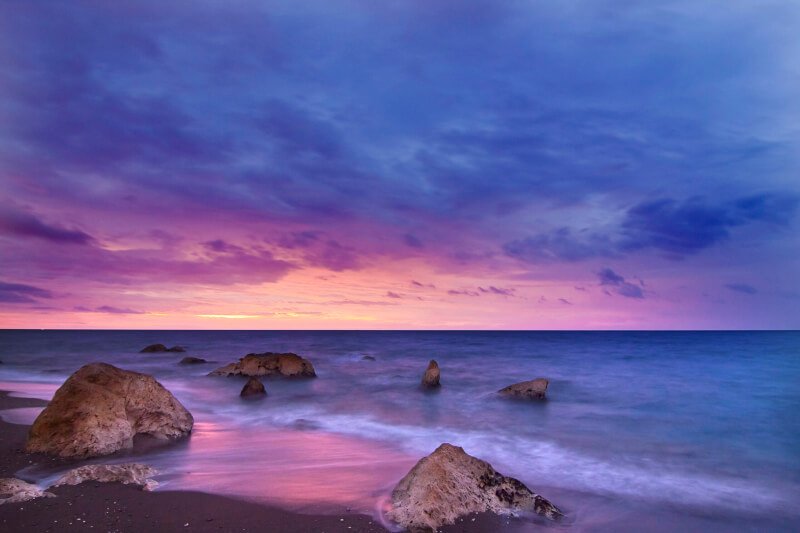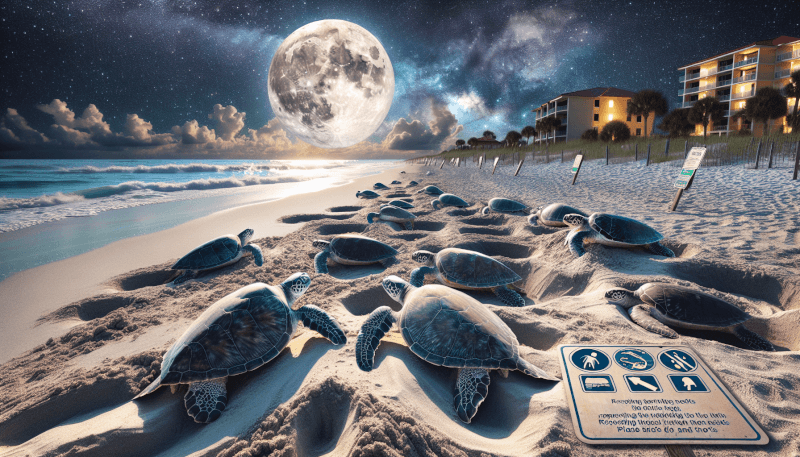During the turtle nesting season in Florida, it is important to be aware of the dos and don’ts to ensure the safety and protection of these amazing creatures. From May to October, thousands of sea turtles come ashore to lay their eggs, and every action we take can make a difference in their survival. In this article, we will explore some essential guidelines that will enable you to be a responsible visitor and observer during this critical time. By following these dos and don’ts, you can contribute to the preservation of these incredible animals and their nesting habitats, while also enjoying the awe-inspiring experience of witnessing this natural phenomenon up close.
1. Overview of Turtle Nesting Season in Florida
Florida is home to several species of turtles, and the nesting season is a crucial time for these incredible creatures. Understanding the importance of turtle nesting season, the duration of the season, and the different species found in Florida is vital for their conservation.
1.1 Understanding the Importance
Turtle nesting season plays a vital role in the survival and continuation of turtle populations. During this time, female turtles come ashore to lay their eggs in nests they dig on sandy beaches. These nests provide a safe environment for the eggs to develop and eventually hatch. Protecting these nests is crucial for ensuring the survival of future generations of turtles.
1.2 Duration of the Nesting Season
The nesting season in Florida typically begins in May and lasts until October. Different species of turtles may have specific nesting periods within this broader timeframe. It is important to be aware of the nesting season’s duration to be prepared and take necessary precautions to protect the turtles and their eggs properly.
1.3 Species of Turtles in Florida
Florida is home to several species of turtles, including the loggerhead, green, and leatherback turtles. Each species has its own nesting habits and behaviors, and it is essential to learn about them to understand how to protect their nests effectively.
2. Dos for Protecting Turtle Nests
To ensure the safety and protection of turtle nests during the nesting season, there are several important steps you can take.
2.1 Keep a Safe Distance
When you encounter a turtle on the beach during nesting season, it is crucial to keep a safe distance. Turtles are easily disturbed, and any disturbance can cause them to abandon their nesting attempts. Maintain a distance of at least 30 feet to allow the turtles to nest undisturbed.
2.2 Use Red Flashlights or Filters
If you need to use a flashlight at night on the beach during turtle nesting season, opt for red flashlights or filters. Red light does not disturb turtles as much as white light does, minimizing the chances of disorienting them or causing them to abandon their nesting attempts.
2.3 Fill in Holes and Level Sand Castles
Before leaving the beach, make sure to fill in any holes you dig and level any sand castles you build. These obstacles can impede the movement of turtles and hatchlings, potentially causing injuries or death. By leaving the beach in its natural state, you create a turtle-friendly environment.
2.4 Report Any Nesting Activity
If you encounter turtle nesting activity or a nest, it is essential to report it to the local wildlife authorities or conservation organizations. This information helps experts monitor nesting trends and take necessary actions to protect the nests and the turtles. Remember, your report can make a significant difference in the conservation efforts.
2.5 Use Turtle-Friendly Lighting
If you live near a beach or have a property with beach access, it is important to ensure you have turtle-friendly lighting. Use low-intensity amber or red lights that do not disorient turtles or disrupt their natural behavior. By making this small change, you can contribute to the conservation of turtle nests.
2.6 Support Local Conservation Efforts
One of the most effective ways to protect turtle nests is by supporting local conservation efforts. Get involved with organizations working towards the conservation of turtles and their habitats. Volunteer for beach clean-ups, participate in awareness campaigns, and contribute financially to conservation projects. Your support can go a long way in safeguarding these magnificent creatures.

3. Don’ts During the Turtle Nesting Season
While there are several actions you can take to protect turtle nests, there are also certain things you should avoid doing during the nesting season to ensure the safety and survival of turtles and their eggs.
3.1 Do Not Approach or Touch Turtles
It is important to never approach or touch turtles during the nesting season. When turtles feel threatened or disturbed, they may abandon their nesting attempts or become stressed. Always observe turtles from a safe distance and respect their natural behaviors.
3.2 Avoid Camera Flashes at Night
Camera flashes can startle and disorient nesting turtles, causing them to abandon their nesting attempts. Avoid using camera flashes and opt for non-invasive photography techniques that prioritize the well-being of the turtles and their habitat.
3.3 Do Not Use Fireworks on the Beach
Fireworks can be extremely disruptive to nesting turtles, as they create loud noises and bright lights. Avoid using fireworks on the beach during the nesting season to prevent any disturbances or potential harm to the turtles.
3.4 Do Not Leave Trash on the Beach
Leaving trash on the beach not only poses a threat to the environment but also to nesting turtles. Trash can entangle or be ingested by turtles, leading to severe injuries or death. Always clean up after yourself and dispose of trash properly to maintain a safe nesting environment.
3.5 Avoid Bringing Pets to the Beach
Pets, particularly dogs, can disturb nesting turtles and their nests. The presence of dogs can cause stress to the turtles and potentially lead to the destruction of nests. To ensure the safety of turtles and their nesting sites, avoid bringing pets to the beach during the nesting season.
4. How to Identify Turtle Nests
Being able to identify turtle nests is crucial for their protection and conservation. There are several key indicators to look out for when attempting to identify turtle nests.
4.1 Recognizing Turtle Tracks
Turtles leave distinctive tracks as they make their way from the water to their nesting site. Look for tracks resembling large flippers, often with drag marks in the sand. These tracks are a clear sign that a turtle may have nested nearby.
4.2 Identifying Nesting Sites
Turtle nesting sites are usually areas of sand that have been disturbed or dug up, often in the shape of a shallow depression. These sites may have other tracks leading to or from them, indicating nesting activity. Take care not to disturb these sites when exploring the beach.
4.3 Understanding the Egg Laying Process
Understanding how turtles lay their eggs can also help in identifying nests. Female turtles dig a hole in the sand using their flippers and deposit their eggs one by one. The eggs are then covered and left to incubate. Observing this process from a safe distance can provide valuable insights into the location of nests.

5. Understanding the Threats to Turtle Nests
Turtle nests face several threats that can significantly impact their survival. By understanding these threats, we can take proactive measures to address and mitigate them effectively.
5.1 Predators of Turtle Nests
Predators, such as raccoons, foxes, and birds, pose a significant threat to turtle nests. These animals can dig up the eggs and consume them, reducing the chances of successful hatching. Protecting nests from these predators is essential for ensuring the survival of turtle populations.
5.2 Coastal Erosion and Climate Change
Coastal erosion and climate change have a direct impact on turtle nests. Rising sea levels and increased storm activities can destroy nesting sites or flood them, causing the eggs to drown. Addressing these larger environmental issues is crucial for the long-term protection of turtle nests.
5.3 Light Pollution and Disorientation
Light pollution from coastal development can disorient nesting turtles and hatchlings. Bright lights on the beach can confuse them, leading to disorientation and potentially fatal outcomes. Minimizing light pollution and implementing turtle-friendly lighting practices are vital for reducing this threat.
5.4 Marine Debris and Pollution
Marine debris, such as plastic bags and fishing nets, can entangle and suffocate turtles. Pollution, including chemical runoff and oil spills, can also contaminate their habitats, affecting their overall health and reproductive success. Proper waste management and responsible practices are essential for reducing these threats.
6. What to Do if You Find an Injured or Stranded Turtle
Encountering an injured or stranded turtle can be distressing, but there are specific actions you can take to help.
6.1 Contacting the Local Wildlife Authorities
If you find an injured or stranded turtle, the first step is to contact the local wildlife authorities or a designated sea turtle rescue group. These organizations have the expertise and resources to provide appropriate care for the turtle and ensure its well-being.
6.2 Providing Temporary Shelter
While waiting for help to arrive, you can provide temporary shelter for the turtle. Create a shaded area using towels or other materials to protect the turtle from direct sunlight. Avoid handling the turtle excessively to minimize stress.
6.3 Avoiding Feeding or Attempting to Treat the Turtle
Unless you have received specific instructions from wildlife authorities or trained professionals, it is crucial to avoid feeding or attempting to treat the injured turtle. Feeding the turtle may cause harm or interfere with its natural dietary needs. Leave the care to the experts, who will provide the necessary treatment.

7. Educating Others about Turtle Nesting Season
Raising awareness about turtle nesting season is essential to encourage others to protect these magnificent creatures. There are several ways you can help educate others and promote conservation efforts.
7.1 Sharing Information on Social Media
Social media platforms provide a powerful tool for spreading awareness about turtle nesting season. Share informative articles, pictures, and educational content about turtles and their nesting habits. By reaching a wider audience, you can inspire others to join the cause.
7.2 Organizing Beach Clean-up Campaigns
Organizing beach clean-up campaigns is an effective way to educate others about the importance of protecting turtle nests. By actively participating in cleaning the beaches, you can highlight the impact of marine debris on turtles and their habitats. Encourage others to join and make a positive difference.
7.3 Hosting Awareness Events
Hosting awareness events, such as workshops or presentations, can provide a platform for sharing information about turtle nesting season. Invite experts and conservationists to speak about turtle conservation efforts and the importance of protecting their nests. These events can inspire others to take action and contribute to the cause.
8. Laws and Regulations for Protecting Turtles in Florida
Various laws and regulations are in place to safeguard turtles and their nests in Florida.
8.1 Endangered Species Act and Marine Turtle Permit
Turtles are protected under the federal Endangered Species Act, which prohibits harming, harassing, or collecting them without the necessary permits. In Florida, a Marine Turtle Permit may be required for certain activities involving turtles and their nests. Familiarize yourself with these regulations to ensure compliance and contribute to the protection of these species.
8.2 Local Ordinances and Beach Guidelines
Many local governments have implemented specific ordinances and guidelines to protect turtles and their nests. These may include restrictions on certain beach activities, such as driving vehicles on the sand or using artificial lighting during nesting season. It is important to be aware of and adhere to these local regulations to ensure the safety and conservation of turtle nests.

9. Benefits of Protecting Turtle Nests
Protecting turtle nests not only benefits these magnificent creatures but also has broader ecological and economic significance.
9.1 Conservation of Biodiversity
By protecting turtle nests, we contribute to the conservation of biodiversity. Turtles play a crucial role in maintaining the balance of marine ecosystems, and their presence ensures the health and diversity of other species. Protecting their nests preserves the intricate web of life that sustains our planet.
9.2 Maintaining Ecosystem Balance
Turtles are keystone species, meaning their presence has a disproportionate impact on their ecosystem. By ensuring the survival of turtles and their nests, we contribute to maintaining the delicate balance of coastal ecosystems. This balance benefits not only turtles but also other marine species and habitats.
9.3 Economic and Ecotourism Opportunities
Turtle nesting season attracts tourists and nature enthusiasts from around the world. By protecting turtle nests, we support ecotourism and create economic opportunities for local communities. This can lead to sustainable development and the preservation of natural habitats, benefiting both humans and turtles.
10. Conclusion
Turtle nesting season in Florida is a critical time for the conservation of these remarkable creatures. By understanding the dos and don’ts, recognizing turtle nests, and actively participating in conservation efforts, we can ensure their survival for future generations. Let’s come together to protect and celebrate these ancient mariners as they grace our shores during their nesting season.



